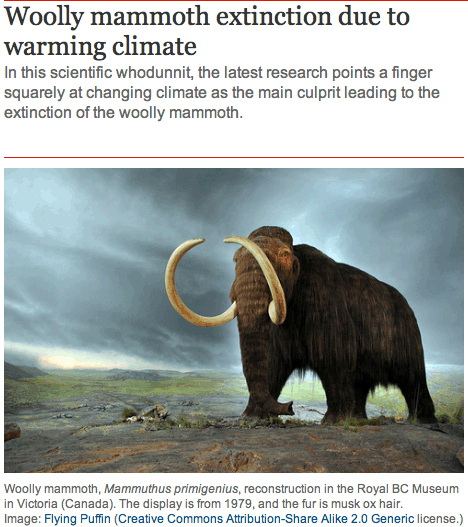Here’s the Guardian headline:
But here’s what the scientist quoted in the article said:
“What caused this population (and consequently the species as a whole) to go extinct is unknown. It could have been climate, humans or inbreeding (these are the three main hypotheses)”, said Dr Dalén. “Or even disease”.

The Guardian is totally in the tank for Global Warming. So wouldn’t blaming climate change for the extinction of the mammoth play right into what climate skeptics have been saying all along – that the earth’s climate goes through major changes without man as a driving force?
Gotta love revisionist paleontology. When I was a kid it was rapid cooling that killed the mammoths. I seem to recall pretty much every mass extinction event was blamed on cooling of some kind. Usually something like an asteroid or volcano blotting out the sun. Considering the fact that most of what we know about mammoths comes from frozen carcasses in Siberia, it makes a certain sense that those areas used to be warm enough to satisfy an enormous vegetarian appetite and that the temperatures must’ve fallen relatively quickly to prevent significant decay during the summer months. Of course making simple logical sense is often a pitfall of bad assumptions.
A species goes extinct when it loses its breeding population, usually as a pretty gradual process and sometimes rapidly. Mammoths and mastodons likely went extinct due to changes in several variables; as the breeding adults became fewer, inbreeding might well contribute.
Climate change in the days of mastodon and mammoth had to be natural. The effect of hunting by ancient people has to be considered as well.
Leave it to the Guardian to pick cherries and pass over the melons and pumpkins.